 W
WOrb-weaver spiders are members of the spider family Araneidae. They are the most common group of builders of spiral wheel-shaped webs often found in gardens, fields, and forests. The English word orb can mean "circular", hence the English name of the group. Araneids have eight similar eyes, hairy or spiny legs, and no stridulating organs.
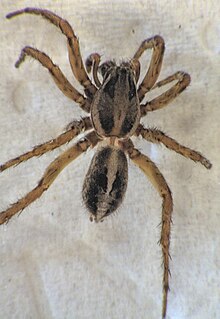 W
WThe Artoriinae are a subfamily of wolf spiders. The monophyly of the subfamily has been confirmed in a molecular phylogenetic study, although the relationships among the subfamilies was shown to be less certain.
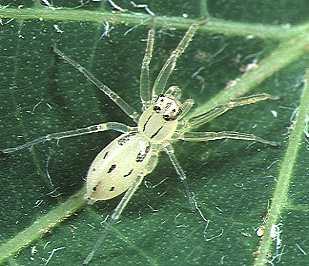 W
WAsemoneinae is a subfamily of jumping spiders. It was created in 2015 by Wayne Maddison. Most species are found in Africa or Asia. The subfamily initially had five genera, but Hindumanes was later transferred to the subfamily Lyssomaninae.
 W
WAtracidae is a family of mygalomorph spiders, commonly known as Australian funnel-web spiders or atracids. It has been included as a subfamily of the Hexathelidae, but is now recognized as a separate family. All members of the family are native to Australia. Atracidae consists of three genera: Atrax, Hadronyche, and Illawarra, comprising 35 species. Some members of the family produce venom that is dangerous to humans, and bites by spiders of six of the species have caused severe injuries to victims. The bites of the Sydney funnel-web spider and northern tree-dwelling funnel-web spider are potentially deadly, but no fatalities have occurred since the introduction of modern first-aid techniques and antivenom.
 W
WThe Aviculariinae are a subfamily of spiders in the family Theraphosidae (tarantulas). They can be distinguished from other theraphosids by a number of characters. Their legs have no or few spines on the underside of the tibial and metatarsal joints of the legs. The last two leg joints have brushes of hairs (scopulae) that extend sideways, particularly on the front legs, giving them a spoon-like (spatulate) appearance. Females have two completely separated spermathecae.
 W
WCyrtarachninae is a subfamily of spiders in the family Araneidae. The group has been circumscribed in several different ways. It originated as the group Cyrtarachneae, described by Eugène Simon in 1892. The group was later treated at different ranks: as a tribe, both under Simon's name and as Cyrtarachnini, and as the subfamily Cyrtarachninae. Circumscriptions have varied. The broadest circumscription, Cyrtarachninae sensu lato (s.l.), includes three of Simon's original groups, including the bolas spiders. Unlike most araneids, members of the subfamily do not construct orb webs, some not using webs at all to capture prey, some using one or more sticky drops on a single line, while others construct webs with few widely spaced non-spiral threads, some triangular. Many have been shown to attract prey by producing analogues of insect sex pheromones, particularly to attract male moths. Adult females may mimic snails, bird droppings and other objects, and so are able to remain exposed during the day time, capturing prey at night.
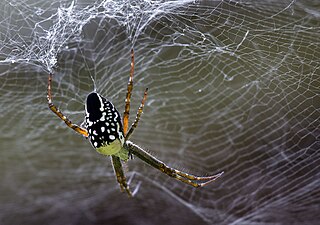 W
WCyrtophorinae is a subfamily of spiders in the orb-weaver spider family. Unlike other orb-weavers, spiders belonging to Cyrtophorinae build horizontal, finely meshed platforms within a tangle of irregular webs. The usually dome-shaped platform is a non-sticky orb web.
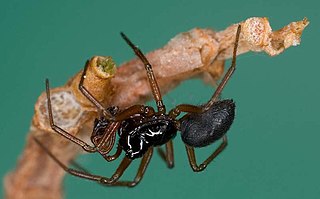 W
WErigoninae are the largest subfamily of sheet weavers (Linyphiidae), which is itself the second largest spider family. In the United States they are known as dwarf spiders, while they are called money spiders in England. The exact taxonomic limits of the subfamily are not yet known.
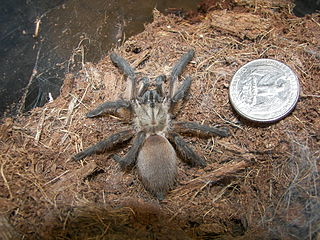 W
WThe Eumenophorinae are a subfamily of tarantula spiders. They are known from genera distributed across Africa, southwestern countries in Saudi Arabia, and Madagascar and the associated islands.
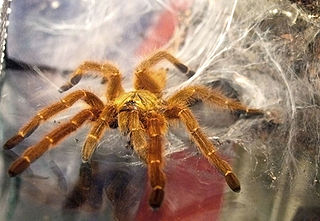 W
WThe Harpactirinae are a subfamily of tarantulas which are native to the continent of Africa. Like many Old World tarantulas, they have a relatively strong venom, and can inflict a painful bite.
 W
WHisponinae is a subfamily of jumping spiders. The subfamily has six known extant genera and three extinct genera.
 W
WHolocneminae is a subfamily of cellar spiders.
 W
WLyssomaninae is a subfamily of jumping spiders. It includes four genera, three from the New World.
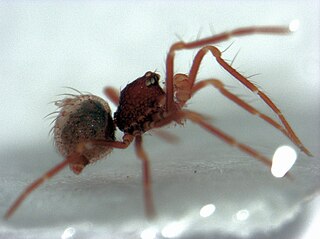 W
WThe Micropholcommatinae are a subfamily of araneomorph spiders in the family Anapidae. They were previously treated as the family Micropholcommatidae. Micropholcommatins are extremely small, with body lengths typically between 0.5 and 2 mm. They are usually found among leaf litter or moss.
 W
WNephilinae is a spider subfamily of the family Araneidae with seven genera. The various genera in Nephilinae were formerly grouped in the family Nephilidae, and before that in the Tetragnathidae and in the Araneidae. All nephiline genera partially renew their webs. Spiders in the subfamily Nephilinae are commonly referred to as golden orb-weavers.
 W
WOrnithoctoninae is a subfamily of tarantulas found in Southeast Asia. It was first erected in 1895 by Reginald Innes Pocock based on the type specimen Ornithoctonus andersoni. Terrestrial members of this subfamily are often known as earth tigers.
 W
WProdidominae is a spider subfamily, sometimes called long-spinneret ground spiders. It was formerly regarded as a separate family, Prodidomidae, which was reduced to a subfamily of the Gnaphosidae in 2018.
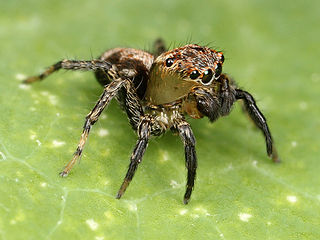 W
WSalticinae is a subfamily of jumping spiders. It includes over 90% of the known species of jumping spiders. The subfamily is divided into two unranked clades: Amycoida and Salticoida.
 W
WThe Selenocosmiinae are a subfamily of tarantulas found in South-East Asia and Australia.
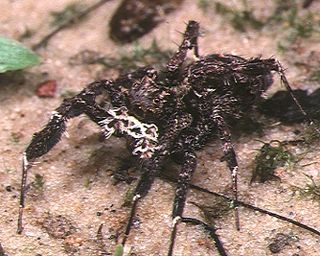 W
WThe Spartaeinae are a subfamily of the spider family Salticidae. The subfamily was established by Fred R. Wanless in 1984 to include the groups Boetheae, Cocaleae, Lineae, Codeteae and Cyrbeae, which in turn were defined by Eugène Simon.
 W
WThe Stromatopelminae are a subfamily of tarantulas native to West Africa and part of Central Africa. The subfamily was first proposed by Günter Schmidt in 1993.
 W
WThe Theraphosinae are a large subfamily of Mygalomorphae spiders in the family Theraphosidae found in the Neotropical realm.
 W
WThe Zorinae are a spider subfamily of the Miturgidae, with more than 70 described species in 13 genera.